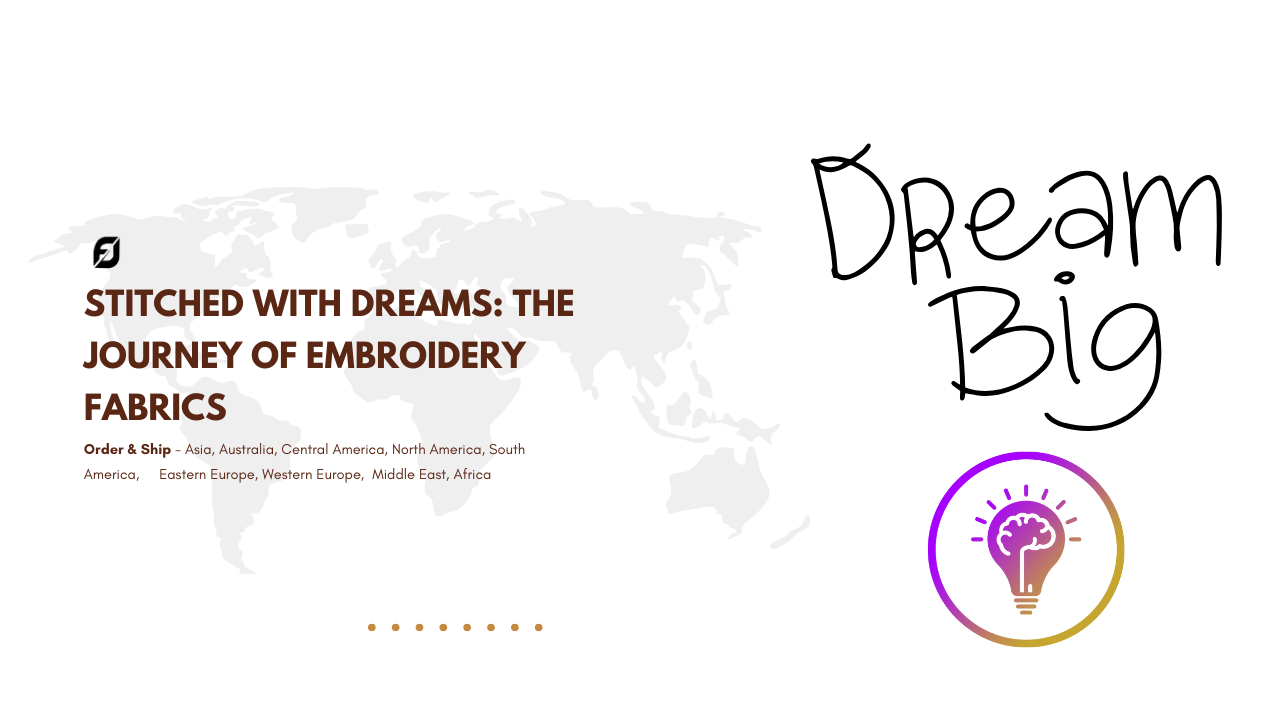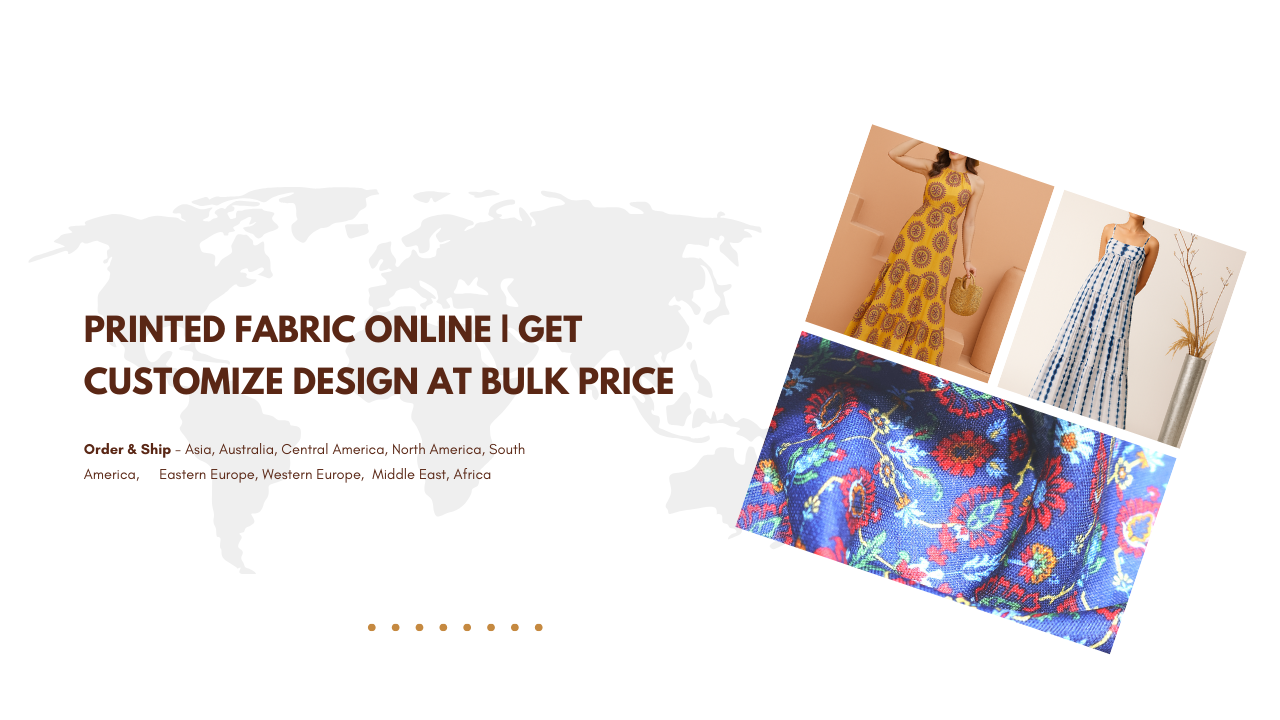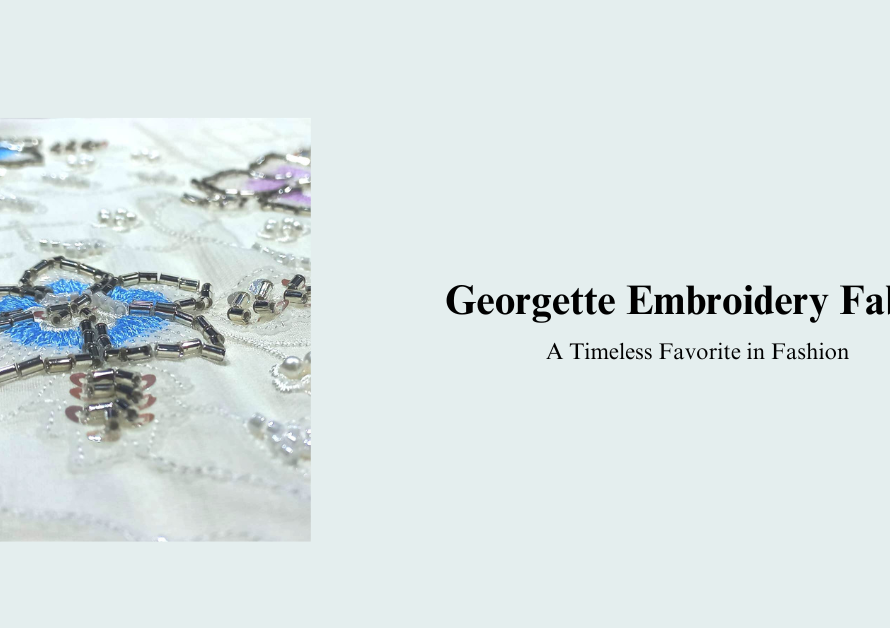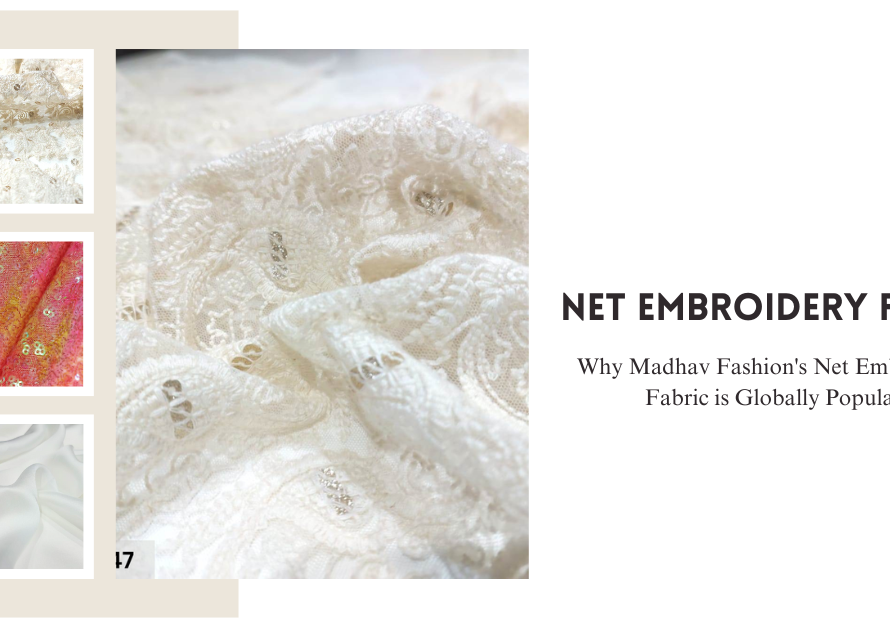Embroidery Fabric enthusiasts know that while floss steals the spotlight, the fabric you choose is equally crucial for a successful project.
Your choice of embroidery fabric, often referred to as the “ground,” can either elevate your stitching or lead to frustrating outcomes. Here are our top 10 tips for selecting the perfect embroidery fabric and achieving embroidery excellence.
1. Thread Count Matters
Just like bed linens, thread count plays a pivotal role in embroidery fabric. Opt for a lower thread count (under 150) to ensure a looser weave that allows easy needle and thread passage.
Fabrics such as muslin, cotton, Aida, linen, Flour Sack, and Osnaburg are great choices.
2. Embrace Natural Materials
Natural fabrics like cotton, linen, silk, wool, or blends thereof are your best friends in embroidery. They offer a soft yet sturdy foundation for your decorative stitches and allow needles to smoothly traverse both horizontally and vertically. Avoid synthetics, as they can lead to thread fraying.
Top 10 Tips for Choosing the Right Hand Embroidery Fabric
3. Kona Cotton for Quilting
If your embroidery project involves quilting, consider Kona (quilters) cotton. It’s lightweight, holds well in a hoop, boasts a friendly 120 thread count, and prevents stitches from showing through.
— cotton fabric for embroidery
4. Pre-Wash for Puckering Prevention
Always launder your chosen fabric before diving into your embroidery project. This step tightens the weave, ensuring consistency across the panel, and pre-shrinks the fabric, vital if your work will endure washing on shirts, quilts, or other items.
—best fabric for machine embroidery
5. Stabilize for Strength
For heavy or layered designs or when working with beads, buttons, or other embellishments, add a stabilizer or interfacing to the back of your fabric. This strengthens the fabric without altering its appearance.
—linen fabric for embroidery
6. Test and Experiment
When in doubt, it’s best to experiment. Get a few fabric samples, do some stitching, and see which one aligns best with your specific project. Each textile trial adds to your embroidery expertise, guiding you toward the right fabric intuitively.
—-best fabric for hand embroidery patches
Choosing the perfect embroidery fabric is an art, and Madhav Fashion is here to elevate your artistry. As one of Asia’s premier embroidery and printed fabric manufacturing companies, Madhav Fashion offers an extensive range of high-quality fabrics to enhance your embroidery projects. – Top 10 Tips for Choosing the Right Hand Embroidery Fabric
Whether you prefer the timeless appeal of muslin or the versatility of Osnaburg, Madhav Fashion’s fabrics with their loose weaves are ideal for hand embroidery. Their commitment to quality and craftsmanship ensures that your embroidery journey is filled with success and creativity.
So, as you embark on your next embroidery project, remember that the right fabric choice is key to achieving the stunning results you desire. With Madhav Fashion by your side, your embroidery endeavors are destined for greatness.
7. Explore Color Harmony
The color of your embroidery fabric can significantly impact the final look of your project. Consider choosing a fabric color that complements your embroidery thread colors. Natural, neutral hues like white, cream, or soft pastels often work well, allowing your stitches to stand out beautifully.
Madhav Fashion offers a diverse range of natural-colored fabrics that harmonize seamlessly with various embroidery palettes. — Top 10 Tips for Choosing the Right Hand Embroidery Fabric
8. Dive into Madhav Fashion’s Fabric Range
When on the quest for embroidery-friendly fabrics, look no further than Madhav Fashion. As one of the leading embroidery and printed fabric manufacturers in Asia, they boast an impressive selection of materials crafted to perfection. From muslin to Osnaburg, their fabrics are renowned for their loose weaves, making them the ideal canvas for your hand embroidery projects. — Top 10 Tips for Choosing the Right Hand Embroidery Fabric
9. Tailor Your Choice to Your Project
Consider the specific nature of your embroidery project. If you’re working on a quilt, Kona cotton is an excellent option.
With its lightweight nature and embroidery-friendly 120 thread count, it ensures your stitches remain secure without being visible through the fabric. Madhav Fashion’s fabric offerings align perfectly with diverse project requirements.
10. Experiment and Evolve
Building your embroidery expertise involves experimentation. Don’t hesitate to try out different fabrics to discover which one suits your project best.
Madhav Fashion’s extensive variety of fabrics serves as an ideal playground for your experimentation. Over time, you’ll develop an intuitive sense for selecting the perfect fabric to bring your embroidery visions to life.
With Madhav Fashion’s high-quality embroidery and printed fabrics at your disposal, your stitching projects are poised for excellence. As you apply these tips and immerse yourself in the world of hand embroidery, your creations are bound to shine with unmatched beauty and craftsmanship.
FAQ
1. What is the importance of thread count in choosing embroidery fabric?
Thread count plays a crucial role in embroidery fabric selection. For a successful embroidery project, a lower thread count, typically under 150, is recommended. This looser weave ensures that your needle and thread pass through smoothly without resistance.
Fabrics with a higher thread count can be challenging to work with, potentially leading to frustration and discomfort during stitching.
Some excellent choices for lower thread count fabrics include muslin, cotton, Aida, linen, Flour Sack, and Osnaburg. These options offer the ideal balance of weave tightness for a seamless embroidery experience.
2. Why are natural materials preferred for embroidery fabric?
Natural materials like cotton, linen, silk, wool, or blends of these fibers are favored for embroidery. These materials provide a soft yet sturdy foundation for decorative stitching.
Moreover, their fibers run both horizontally and vertically, allowing the needle to easily pass through without damaging the fabric. In contrast, synthetic fabrics may lead to thread fraying over time, making them less suitable for embroidery projects.
3. What makes Kona cotton a great choice for quilting and embroidery?
Kona cotton, also known as “quilters” cotton, is a popular choice for quilting and embroidery due to its lightweight nature and a thread count of 120.
This fabric stays taut in an embroidery hoop, ensuring your stitches remain secure. Additionally, Kona cotton is less sheer than other cotton types, preventing your stitches from showing through on the reverse side of the fabric.
4. Why is pre-washing embroidery fabric important?
Pre-washing your chosen fabric before starting your embroidery project is essential. It tightens the weave, ensuring consistency across the fabric panel.
Additionally, pre-shrinking the fabric is crucial, especially if your embroidery will be incorporated into items like shirts or quilts that may undergo washing. Pre-washing prevents unexpected shrinkage and distortion of your beautifully stitched designs.
5. When should I consider adding a stabilizer or interfacing to my embroidery fabric?
Stabilizers or interfacings are essential when you plan to create heavy or layered embroidery designs.
They provide additional strength to your ground fabric, ensuring it can withstand the weight and complexity of your stitching. Importantly, stabilizers do this without altering the appearance of your embroidery project, allowing your designs to shine.
6. What should I do if I’m unsure about the best fabric for my project?
When in doubt, the best approach is to experiment. Obtain fabric samples, perform some stitching trials, and evaluate which one works best for your specific project.
Each trial enhances your embroidery skills and will eventually lead you to intuitively select the perfect fabric for your embroidery endeavors.
7. How can I choose the right fabric color to complement my embroidery threads?
Selecting an appropriate fabric color that complements your embroidery thread palette is crucial. Natural, neutral hues like white, cream, or soft pastels often work well as they allow your stitches to stand out beautifully.
Madhav Fashion offers an array of natural-colored fabrics that harmonize seamlessly with various embroidery color schemes.
8. Tell me more about Madhav Fashion’s range of embroidery-friendly fabrics.
Madhav Fashion is renowned as one of Asia’s premier embroidery and printed fabric manufacturers. Their extensive selection includes materials crafted to perfection for hand embroidery.
From muslin to Osnaburg, their fabrics are known for their loose weaves, making them the ideal canvas for your hand embroidery projects.
With a commitment to quality and craftsmanship, Madhav Fashion ensures that your embroidery journey is filled with success and creativity.
9. How should I choose a fabric based on my specific embroidery project?
The nature of your embroidery project should guide your fabric choice. For quilting projects, Kona cotton, with its lightweight nature and 120 thread count, is an excellent option.
It keeps your stitches secure and prevents them from showing through the fabric. Madhav Fashion offers fabrics suitable for diverse project requirements, ensuring you find the perfect match for your creative endeavors.
10. Can you elaborate on the importance of experimentation in fabric selection for embroidery?
Experimentation is key to developing expertise in choosing the right fabric for your embroidery projects. Trying out different fabrics allows you to discover which one best suits your specific project’s needs.
Madhav Fashion’s wide variety of fabrics provides an ideal platform for your experimentation. Over time, you’ll gain an intuitive sense for selecting the perfect fabric to bring your embroidery visions to life.
11. Why is Madhav Fashion considered an ideal source for embroidery and printed fabrics?
Madhav Fashion is widely recognized as one of Asia’s best embroidery and printed fabric manufacturing companies.
They have earned this reputation through their unwavering commitment to providing high-quality fabrics for embroidery and printing. Their extensive range of materials caters to the diverse needs of designers and artisans, ensuring that they have access to top-notch fabrics that can elevate their creations.
12. Can you recommend some natural-colored fabrics for embroidery projects?
Natural-colored fabrics, such as those offered by Madhav Fashion, are excellent choices for embroidery projects.
They include options like white, cream, and light pastels, which provide a neutral and elegant background for your embroidery work. These hues allow your stitches to stand out beautifully, creating a visually appealing contrast that enhances the overall aesthetic of your project.
13. How can I access Madhav Fashion’s range of embroidery-friendly fabrics?
Madhav Fashion’s extensive collection of embroidery-friendly fabrics is readily available through their website and authorized retail partners.
Whether you’re looking for muslin, Osnaburg, or other materials that are perfect for hand embroidery, you can explore their offerings, access detailed product information, and make informed choices for your embroidery projects.






